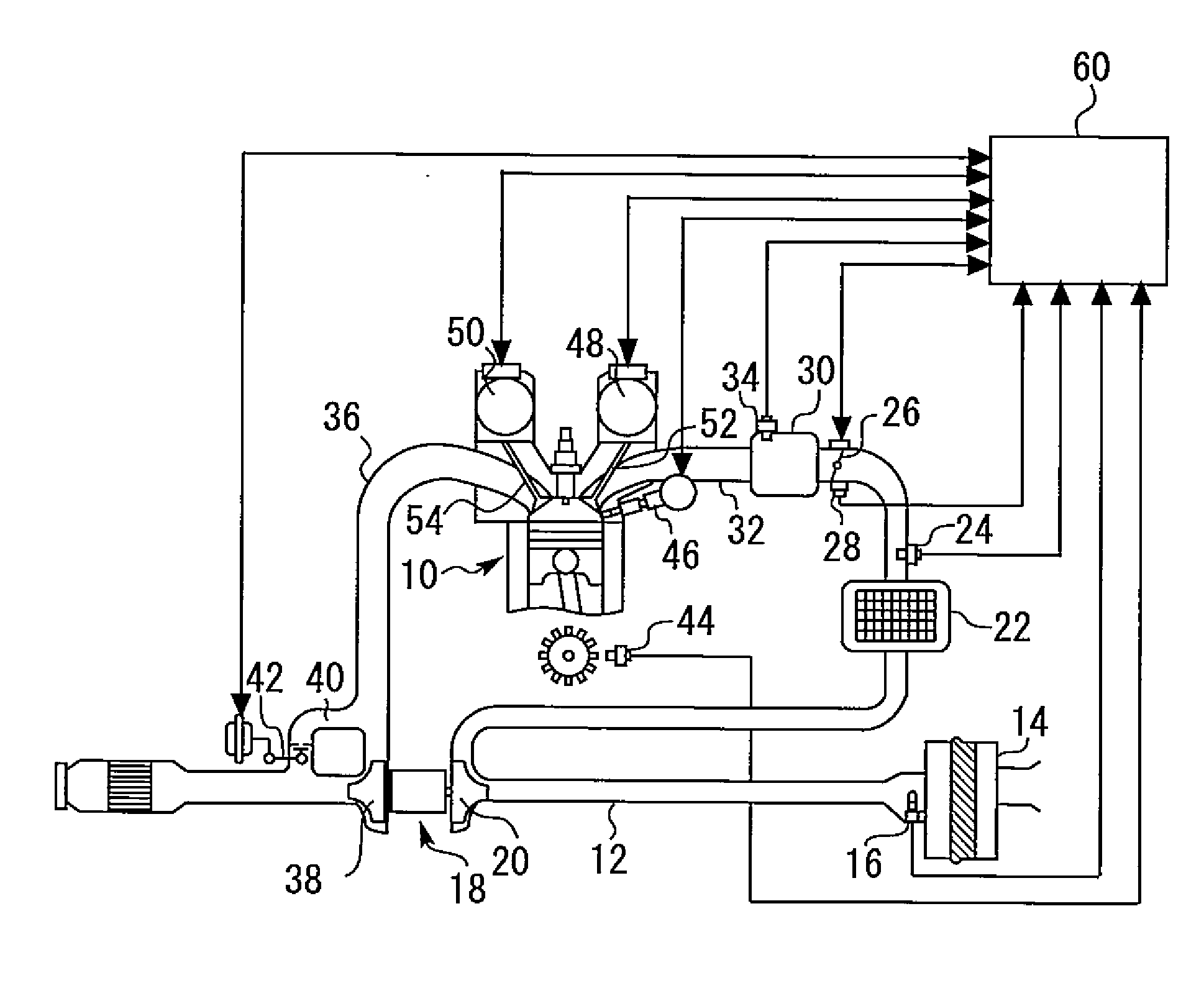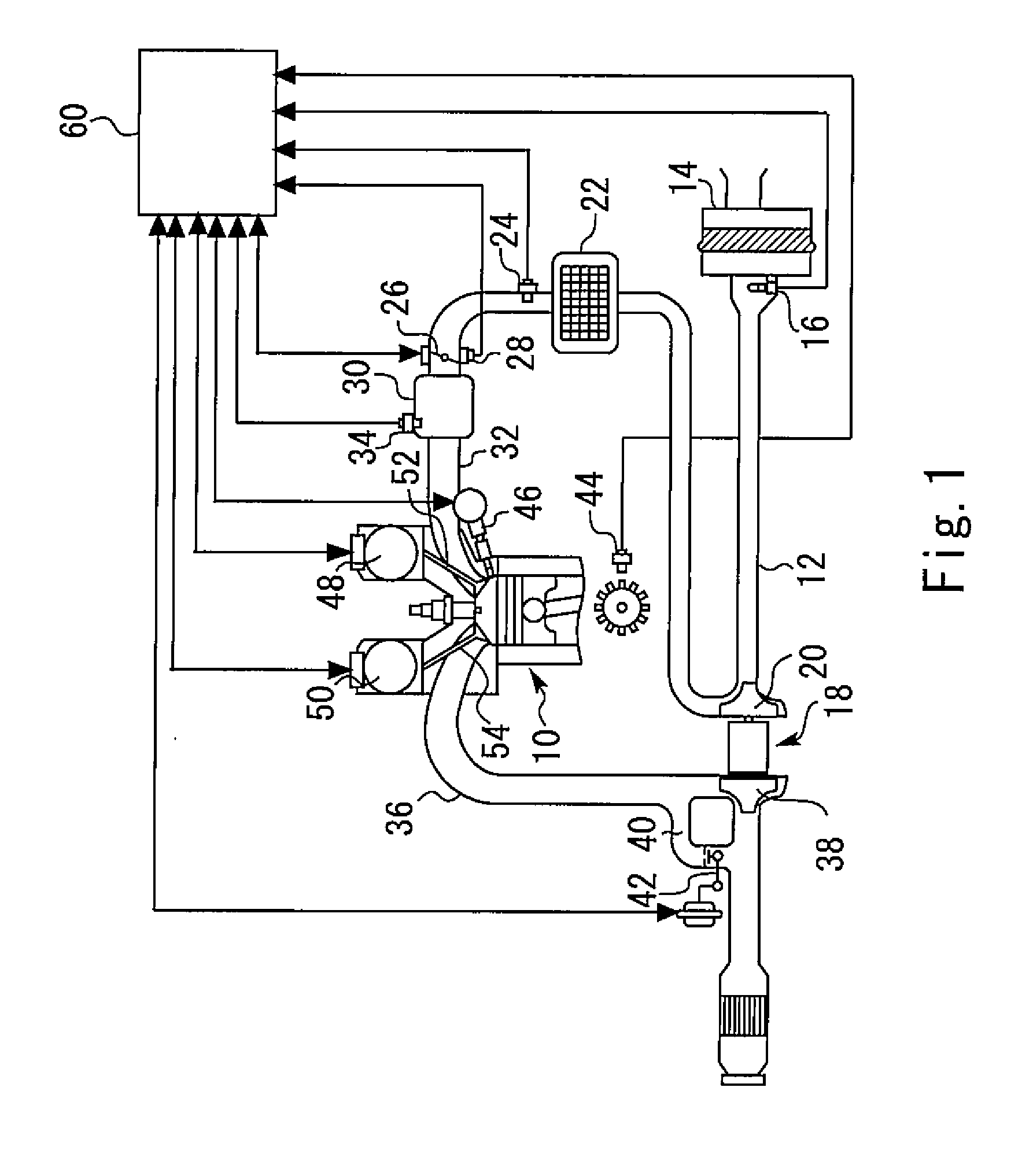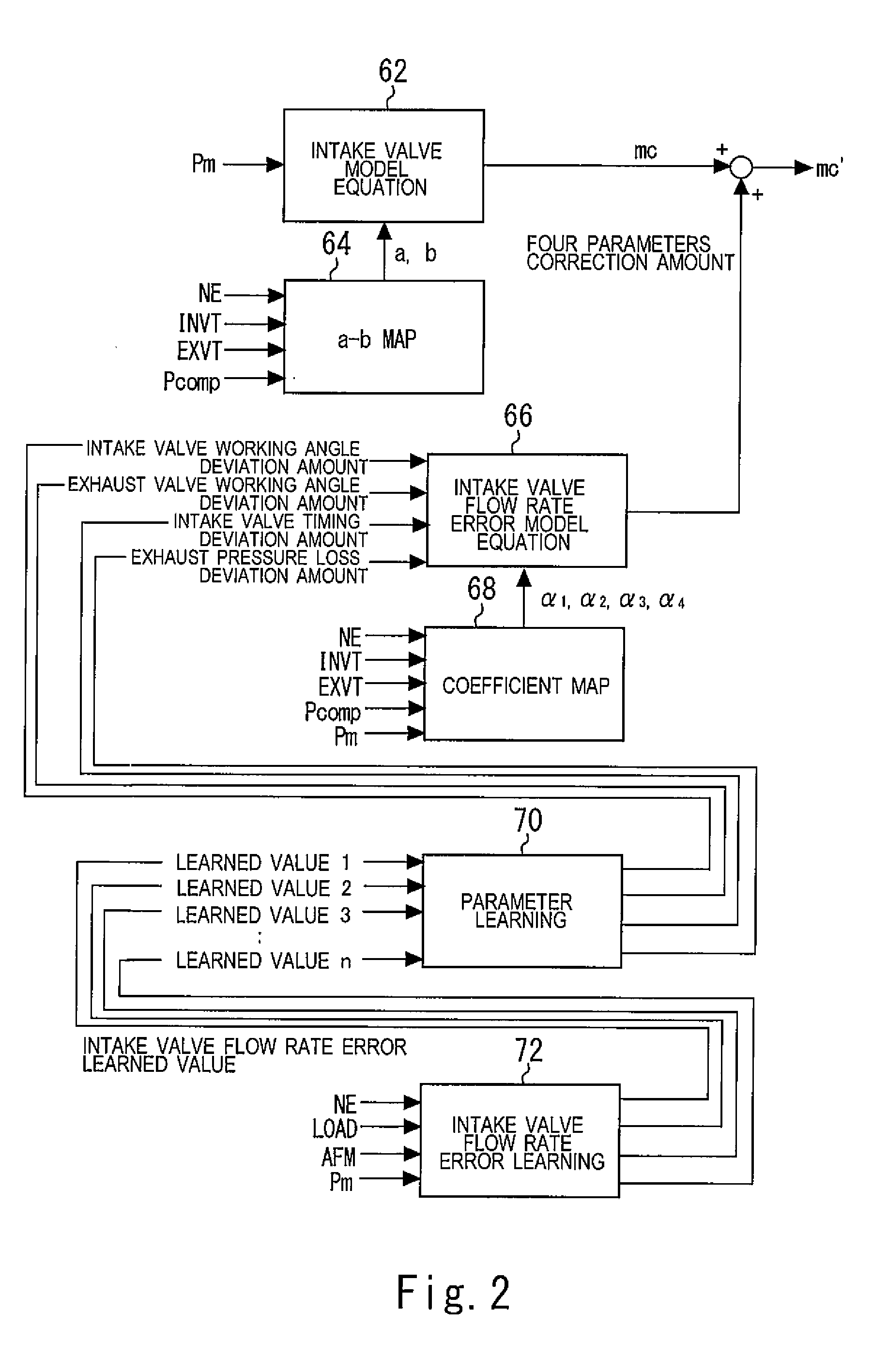Control device for internal combustion engine
a control device and internal combustion engine technology, applied in the direction of electric control, combustion-air/fuel-air treatment, machines/engines, etc., can solve the problems of low estimation accuracy of affecting the accuracy of estimating the intake valve flow rate using the intake valve model equation, and affecting the accuracy of estimating the intake valve flow rate. , to achieve the effect of high accuracy, low cost and reduced errors included in learned values of respective parameters
- Summary
- Abstract
- Description
- Claims
- Application Information
AI Technical Summary
Benefits of technology
Problems solved by technology
Method used
Image
Examples
Embodiment Construction
[0030]An embodiment of the present invention is described hereunder with reference to the accompanying drawings. However, it is to be understood that even when the number, quantity, amount, range or other numerical attribute of an element is mentioned in the following description of the embodiment, the claimed invention is not limited to the mentioned numerical attribute unless expressly stated or theoretically defined. Further, descriptions of, e.g., structures or steps in conjunction with the following embodiment are not necessarily essential to the claimed invention unless expressly stated or theoretically defined.
[0031]FIG. 1 is a schematic diagram illustrating the configuration of an internal combustion engine that is controlled by a control device of the present embodiment. An internal combustion engine (hereunder, referred to as simply “engine”) 10 according to the present embodiment is configured as a spark-ignition engine that is mounted in a vehicle. However, the number of...
PUM
 Login to View More
Login to View More Abstract
Description
Claims
Application Information
 Login to View More
Login to View More - R&D
- Intellectual Property
- Life Sciences
- Materials
- Tech Scout
- Unparalleled Data Quality
- Higher Quality Content
- 60% Fewer Hallucinations
Browse by: Latest US Patents, China's latest patents, Technical Efficacy Thesaurus, Application Domain, Technology Topic, Popular Technical Reports.
© 2025 PatSnap. All rights reserved.Legal|Privacy policy|Modern Slavery Act Transparency Statement|Sitemap|About US| Contact US: help@patsnap.com



